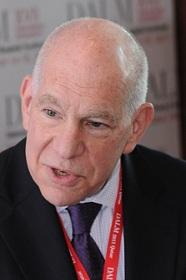Digital wellbeing should be a public health priority for the Arab region
21 October 2025
Published online 17 March 2011

An ongoing study on the genetic make-up of the Qatari population reveals three distinct subpopulations with genetic variations that affect disease risk, as well as the likely efficacy and adverse effects of drugs.
The research is conducted by the Weill Cornell Medical College in the United States, its Qatar-based college and Hamad Medical Corporation in Qatar. "The largest part of the population is the Arab Bedouins, which is a fairly homogenous genome and largely expected in this part of the world," says Ronald Crystal, a geneticist at Weill Cornell Medical College in New York and one of the principle investigators.
"But then there is a second population of Qataris that is Persian-based with a little admixture from Asia and Pakistan. Then there is a third population which is sub-Saharan African-based."
These three subpopulations are exposed to the same environment, yet there are genetic differences and variability between them. "This has real implications in terms of their response to drugs. Certain drugs may work better in each population than others," adds Crystal.
Qatar, like most modern societies around the world, is encountering epidemics of diabetes, obesity and cardiovascular diseases. Recent genome-wide association studies (GWAS) have identified several genes that increase individual risk. However, these studies were based on populations of Europeans, making them less valuable in populations of different ancestry.
The composition of the Qatari population makes it ideal to study the genes responsible for non-European risk factors. "The Qataris are a population that evolved where it is highly structured and they tend to marry within their tribes so there is some consanguinity," says Crystal.
"Understanding why Qataris are more susceptible to certain diseases would probably be easier to study here than in other populations because there is more homogeneity.
"So it is not only important to the Qatari population but by studying their own populations the Qataris can contribute to world biomedical research as well."
The study will last for three more years, says Mahmoud Zirie, head endocrinologist in Hamad Medical Corporation. "We've got more than 300 individuals taking part in the genetic testing now, but we aim to reach 2,000 over the coming period."
Crystal presented some preliminary results at the XVII International Drugs Affecting Lipid Metabolism Symposium (DALM 2011) taking place 14–16 March in Doha, Qatar. Qataris are 1.2 times more likely to have the fat mass and obesity-associated gene (FTO), which is a risk factor for obesity and Type II Diabetes.
"We've also observed that there is genetic variability that differs in the three populations in regards to susceptibility to one of the chemotherapeutic agents called 5-Flurouracil, which is widely used to treat colon cancer as well as other cancers," says Crystal. The risk allele, which was found to have a high prevalence among the population of Qatar, can increase toxicity of the drug four-fold.
"The Qataris differ among their populations in terms of relative proportions to people that have this genetic variability. So not only do you have the genetic variability but the subpopulation you come from might also increase the risk," adds Crystal.
Crystal stresses this information is especially important to doctors in Qatar. "You have got to pay attention to this because it may be very different in the way you diagnose and treat a Qatari depending on their genetic background."
The team is now talking to physicians and scientists in Oman and other Gulf states to expand their research to cover more countries. "I think it is so obvious that this is an area that the Middle East can contribute significantly to science. It is going to help our understanding overall in terms of genetics."
doi:10.1038/nmiddleeast.2011.34
Stay connected: